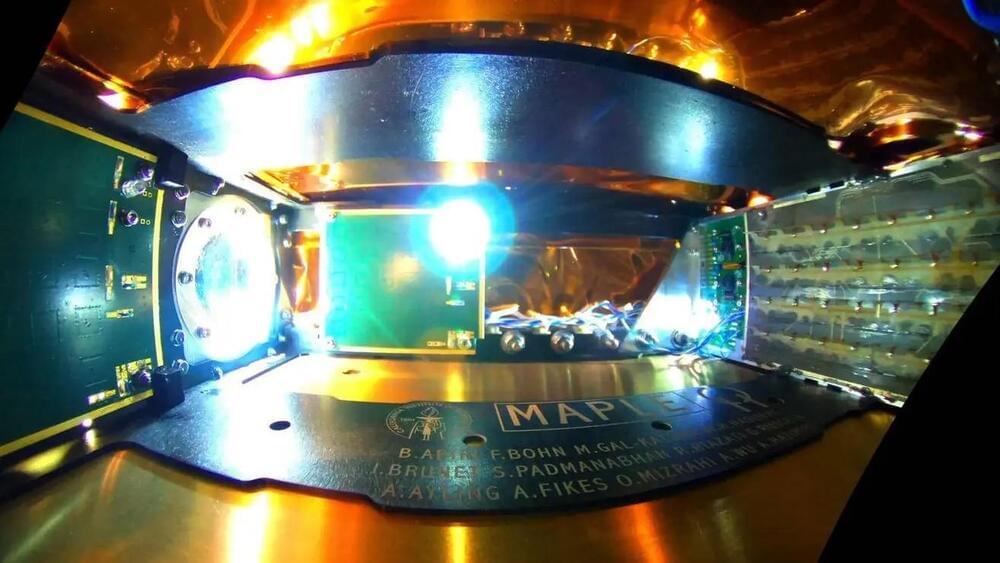Jun 7, 2023
Holy crap! Scientists create pooping robot
Posted by Quinn Sena in category: robotics/AI
Year 2010 😗😁
Bristol Robotics Laboratory boffins threaten to unleash their EcoBot-III pooping robot on the world. The Ig Nobel Prize is in the bag.
Year 2010 😗😁
Bristol Robotics Laboratory boffins threaten to unleash their EcoBot-III pooping robot on the world. The Ig Nobel Prize is in the bag.
Year 2017 😗😁
Pathologists tested the ‘efforts’ of Wim Delvoye’s artwork, which replicates a human digestive system, to raise awareness of bowel cancer screening tests.

Solar power is the fastest-growing form of renewable energy and currently accounts for 3.6% of global electricity production today. This makes it the third largest source of the renewable energy market, followed by hydroelectric power and wind. These three methods are expected to grow exponentially in the coming decades, reaching 40% by 2035 and 45% by 2050. Altogether, renewables are expected to account for 90% of the energy market by mid-century, with solar accounting for roughly half. However, several technical challenges and issues need to be overcome for this transition to occur.
The main limiting factor for solar power is intermittency, meaning it can only collect power when sufficient sunlight is available. To address this, scientists have spent decades researching space-based solar power (SBSP), where satellites in orbit would collect power 24 hours a day, 365 days a year, without interruption. To develop the technology, researchers with the Space Solar Power Project (SSPP) at Caltech recently completed the first successful wireless power transfer using the Microwave Array for Power-transfer Low-orbit Experiment (MAPLE).
Continue reading “New Satellite Successfully Beams Power From Space” »
Year 2021 😗😁
MIT engineers, in collaboration with scientists at Cancer Research UK Manchester Institute, have developed a new way to grow tiny replicas of the pancreas, using either healthy or cancerous pancreatic cells. Their new models could help researchers develop and test potential drugs for pancreatic cancer, which is currently one of the most difficult types of cancer to treat.
Using a specialized gel that mimics the extracellular environment surrounding the pancreas, the researchers were able to grow pancreatic “organoids,” allowing them to study the important interactions between pancreatic tumors and their environment. Unlike some of the gels now used to grow tissue, the new MIT gel is completely synthetic, easy to assemble and can be produced with a consistent composition every time.
Continue reading “Engineers grow pancreatic ‘organoids’ that mimic the real thing” »
Year 2019 😗😁
Hepatology and drug development for liver diseases require in vitro liver models. Typical models include 2D planar primary hepatocytes, hepatocyte spheroids, hepatocyte organoids, and liver-on-a-chip. Liver-on-a-chip has emerged as the mainstream model for drug development because it recapitulates the liver microenvironment and has good assay robustness such as reproducibility. Liver-on-a-chip with human primary cells can potentially correlate clinical testing. Liver-on-a-chip can not only predict drug hepatotoxicity and drug metabolism, but also connect other artificial organs on the chip for a human-on-a-chip, which can reflect the overall effect of a drug. Engineering an effective liver-on-a-chip device requires knowledge of multiple disciplines including chemistry, fluidic mechanics, cell biology, electrics, and optics.
Year 2021
Brain organoids derived from human pluripotent stem cells can model human brain development and disease, though current culture systems fail to ensure reliable production of high-quality organoids. Here the authors combine human brain extracellular matrix and culture in a microfluidic device to promote structural and functional maturation of human brain organoids.
Baby crocodile Jesus 🐊.
Researchers have found the first case of a crocodile who made herself pregnant.
Please make sure your browser supports JavaScript and cookies and that you are not blocking them from loading. For more information you can review our Terms of Service and Cookie Policy.
